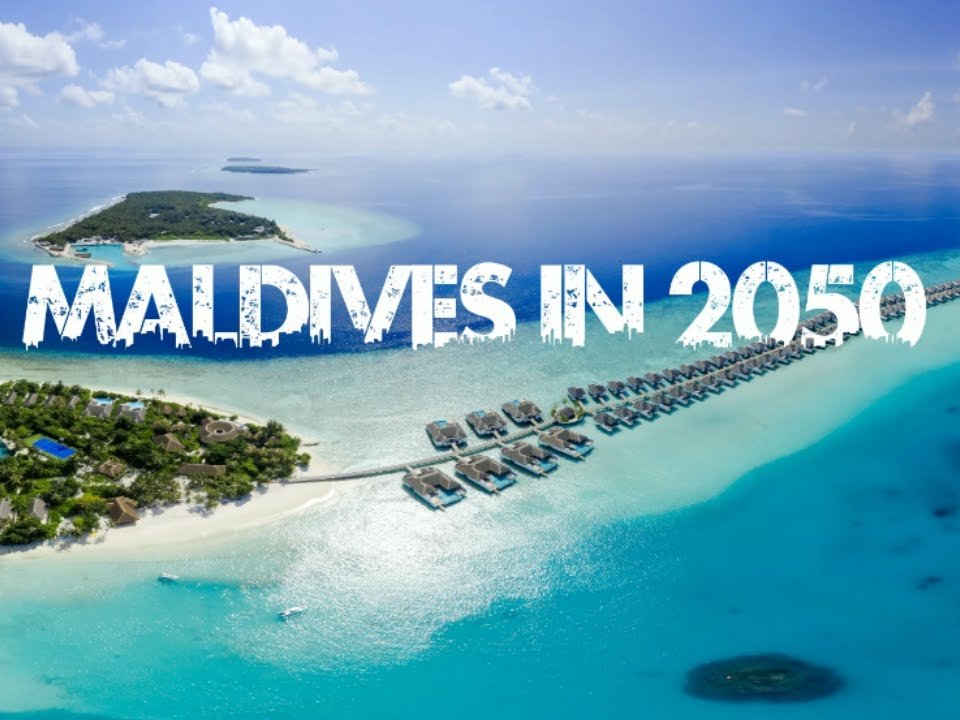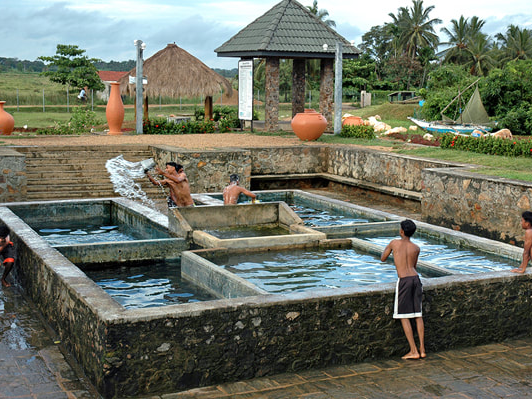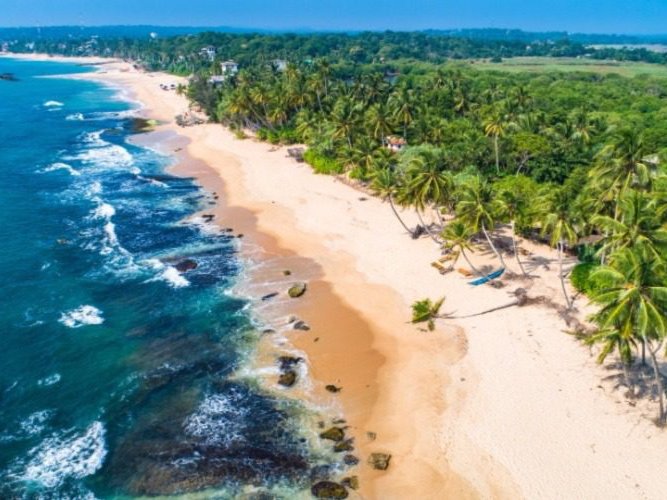Maldives 2050: A Strategic Blueprint for a Fragile Paradise

Maldives at the Crossroads
The Maldives, a stunning archipelago of 1,192 coral islands scattered like jewels across the Indian Ocean, has become synonymous with luxury and exclusivity. For decades, it has ranked among the most coveted tourist destinations on the planet, attracting couples, celebrities, divers, and wellness seekers to its turquoise lagoons and private-island resorts. Tourism is more than an industry here—it is the very lifeblood of the economy, accounting for nearly 30% of GDP and close to 60% of foreign exchange earnings.
Yet, the road to 2050 is far from straightforward. The Maldives is also the world’s most climate-vulnerable nation, with more than 80% of its land lying less than one metre above sea level. The Intergovernmental Panel on Climate Change (IPCC) has repeatedly warned that rising seas, stronger storms, and higher ocean temperatures could imperil the very foundations of Maldivian tourism. Add to this the shifting behavior of global travelers, technological disruption, and growing competition from other destinations, and it becomes clear: the Maldives must transform, adapt, and reinvent itself if it wishes to thrive in 2050.
This article sets out a comprehensive blueprint of strategies, backed by global case studies and practical recommendations, that can enable the Maldives to secure a resilient tourism future—one that balances economic prosperity, environmental stewardship, and community well-being.
The Global Tourism Landscape in 2050
By mid-century, the global tourism sector will look dramatically different from today. Current forecasts suggest that global tourist arrivals may exceed 3 billion annually, with Asia-Pacific expected to drive nearly half of that demand.
Tomorrow’s tourists will not only seek luxury; they will demand sustainability, authenticity, and technology-driven convenience. Carbon-neutral travel, biodiversity protection, immersive cultural exchange, and digital pre-travel experiences will shape destination choice. The Maldives must therefore evolve from being primarily a honeymoon haven to becoming a multifaceted, climate-resilient, and digitally integrated tourism leader.
Strategic Pillars for Maldives 2050
1. Climate-Resilient Infrastructure
The Maldives cannot ignore geography. With islands barely above sea level, tourism infrastructure must adapt.
- Floating and elevated resorts will need to become mainstream, inspired by Dutch floating architecture. Entire “floating atolls” powered by renewable energy could redefine luxury and resilience simultaneously.
- Artificial islands like Hulhumalé already offer a glimpse of the future. By 2050, more reclaimed, elevated, and multi-functional islands will be critical to house not only residents but also climate-proof resorts.
- Carbon neutrality is no longer optional. The Maldives’ pledge to become net-zero by 2030 must be leveraged as a global brand advantage, attracting climate-conscious travelers willing to pay a premium for guilt-free tourism.
2. Diversification Beyond Luxury
The Maldives cannot afford to rely solely on honeymooners and high-spending luxury tourists. Diversification will be essential.
- Community-based tourism on inhabited islands can empower locals while offering visitors authentic experiences.
- Medical wellness tourism, from Ayurveda-inspired retreats to longevity and rehabilitation clinics, will cater to aging populations.
- Sports tourism, with international surfing championships, kiteboarding events, and diving expeditions, can attract new demographics.
- Educational tourism, particularly marine biology programs in partnership with universities, can make Maldives a hub for environmental learning.
3. Digital Transformation
The Maldives must embrace the digital wave sweeping global tourism.
- AI-powered itineraries will provide ultra-personalized travel experiences.
- Blockchain systems can enhance transparency in transactions and sustainability tracking.
- Virtual and augmented reality will allow travelers to explore reefs or resorts before booking, while also engaging them in conservation awareness.
- A “Digital Maldives Passport”—a loyalty and identity program—can simplify mobility for repeat visitors and create seamless travel experiences.
4. Environmental Stewardship
Tourism cannot exist without thriving ecosystems.
- Coral regeneration programs must be scaled up, positioning Maldives as the global hub for reef science and conservation.
- Single-use plastics should be completely phased out by 2035 across the entire tourism sector.
- Marine Protected Areas (MPAs) must expand from today’s levels to at least 30% of the nation’s waters by 2050, safeguarding biodiversity and ensuring sustainable fisheries.
5. Regional Integration and Connectivity
No island nation can succeed in isolation.
- The Maldives should aim to make Malé an aviation hub for the Indian Ocean, reducing dependency on foreign transit points.
- Electric ferry systems must connect clusters of islands, reducing reliance on costly seaplanes.
- Partnerships with Sri Lanka, Mauritius, and Seychelles can develop an Indian Ocean Tourism Circuit, creating multi-country packages for long-haul travelers.
6. Cultural and Heritage Tourism
Too often, Maldives is reduced to “sun, sand, and sea.” Its cultural depth is largely invisible to the world.
- Ancient coral-stone mosques, music, dance, and traditional crafts can be revived as tourism assets.
- UNESCO heritage status for historical sites would add prestige and draw culturally motivated travelers.
- Culinary tourism, highlighting Maldivian seafood and coconut-based dishes, could be integrated into resort experiences.
7. Governance and Crisis Preparedness
The COVID-19 pandemic showed the dangers of overdependence on a single sector. By 2050, Maldives must:
- Establish a Tourism Risk Management Authority to deal with pandemics, cyber-security threats, and climate disasters.
- Create a sovereign wealth fund where a percentage of tourism revenue is reinvested for future shocks.
- Build resilient local governance to ensure fair revenue-sharing with communities.
Case Studies: Lessons for Maldives
1. Seychelles — Managing Carrying Capacity
Seychelles limited large-scale resorts to protect its environment and brand exclusivity. Maldives can follow a similar model, focusing on quality over quantity.
2. Dubai — Iconic Destination Creation
Dubai built global icons like the Palm Jumeirah and Burj Khalifa. Maldives could adopt similar thinking with floating luxury atolls that symbolize climate resilience.
3. Zanzibar — Cultural Renaissance
Zanzibar diversified beyond beaches, showcasing Stone Town and spice tours. Maldives must do the same with its heritage, cuisine, and crafts.
4. Rwanda — Premium Conservation Tourism
Rwanda’s gorilla trekking demonstrates how high-value, low-volume tourism can protect ecosystems while boosting GDP. Maldives can replicate this with reef-based permits and premium marine experiences.
5. Costa Rica — Renewable Energy and Nature Branding
Costa Rica markets itself as a green pioneer. Maldives could similarly become the first carbon-neutral island nation, turning vulnerability into advantage.
6. Singapore — Connectivity Hub
Singapore became indispensable through aviation and events. Maldives could host ocean summits, marine science congresses, and wellness conventions in off-peak seasons.
7. Japan — Disaster Resilience
Japan’s disaster management shows how transparent communication and preparedness can restore tourist confidence quickly after crises. Maldives must adopt similar systems.
Key Statistics to Remember
- Tourist arrivals (2023): 1.87 million.
- Top markets: India, Russia, China, UK, Germany.
- Tourism revenue (2022): USD 3.2 billion.
- Climate risk: Over 80% of land under 1 metre elevation.
- Reef loss: 2016 El Niño event killed 60% of coral reefs.
- Target for 2050: Grow arrivals to 3.5 million while maintaining ecological balance.
Financing the Vision
- Tourism adaptation levy: A small per-visitor fee, ring-fenced for climate adaptation.
- Blue bonds: Issued to investors interested in ocean and climate projects.
- Public-private partnerships: For floating infrastructure, renewable energy, and digital platforms.
- Carbon markets: Monetize seagrass and mangrove conservation.
Conclusion: A Fragile Paradise Reinvented
The Maldives’ fragility is also its strength. If the nation boldly transforms its tourism model, it could become the world’s showcase for climate-resilient island living. By 2050, Maldives should not merely survive—it should inspire, leading the global conversation on how small island nations can turn existential threats into new beginnings.
Disclaimer
This article has been authored and published in good faith by Dr. Dharshana Weerakoon, DBA (USA), based on publicly available data from national and international sources, decades of professional experience across multiple continents, and ongoing industry insight. It is intended solely for educational, journalistic, and public awareness purposes to stimulate discussion on sustainable tourism models. The author accepts no responsibility for any misinterpretation, adaptation, or misuse of the content. Views expressed are entirely personal and analytical, and do not constitute legal, financial, or investment advice. This article and the proposed model are designed to comply with Sri Lankan law, including the Intellectual Property Act No. 52 of 1979 (regarding artisan rights and design ownership), the ICCPR Act No. 56 of 2007 (ensuring non-discrimination and dignity), and relevant data privacy and ethical standards.
✍ Authored independently and organically through lived professional expertise—not AI-generated.
Further Reading: https://www.linkedin.com/newsletters/7046073343568977920/
Additional Reading: https://dharshanaweerakoon.com/underwater-eco-accommodation/






